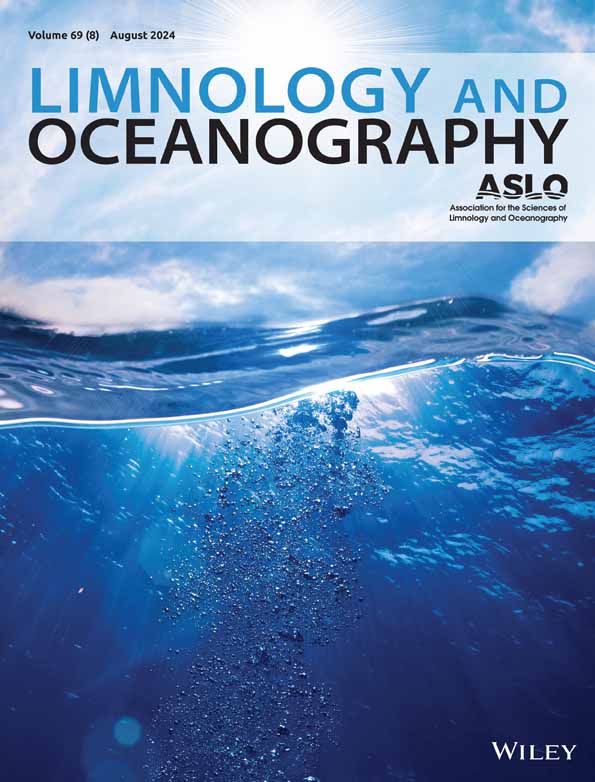Incorporation of diazotrophically fixed nitrogen by juvenile fish in a coastal sea
IF 3.7
1区 地球科学
Q1 LIMNOLOGY
引用次数: 0
Abstract
Nitrogen‐fixing cyanobacterial blooms worldwide have been shown to support production in primary consumers such as zooplankton and benthic invertebrates, but there have been few estimates of how much of the cyanobacterial nitrogen ends up in secondary consumers, such as fish. Using compound‐specific analysis of δ沿岸海域幼鱼对重氮营养固定氮的吸收
世界范围内的固氮蓝藻大量繁殖已被证明支持浮游动物和底栖无脊椎动物等初级消费者的生产,但很少有人估计有多少蓝藻氮最终会进入次级消费者,如鱼类。利用氨基酸δ15N的化合物特异性分析,我们研究了蓝藻固定(重氮营养)氮(N)是否可以在更高营养水平的生物(如浮游动物和粘虫)中追踪,并在大西洋鲱鱼幼鱼(Clupea harengus)中检测到。富营养化站固氮蓝藻的生物量高于参考站,自养种群中浮游动物可食用的蓝藻比例更高。富营养化站青鱼幼鱼源氨基酸的δ15N‰随季节显著降低。采用贝叶斯混合模型计算了鲱鱼肌肉组织中重氮固定氮与花前氮的比值,结果表明富营养化站鲱鱼肌肉组织中重氮固定氮的比例(≈34%)高于参考站的鱼(≈18%)。在鱼捕获前两个月,鲱鱼肌肉组织中重氮营养固定N的百分比与环境中固定N的蓝藻菌的生物量之间存在显著关系。这项研究增加了越来越多的证据,表明蓝藻繁殖,一种全球性的现象,支持更高营养水平的生产,包括鱼类。
本文章由计算机程序翻译,如有差异,请以英文原文为准。
求助全文
约1分钟内获得全文
求助全文
来源期刊

Limnology and Oceanography
地学-海洋学
CiteScore
8.80
自引率
6.70%
发文量
254
审稿时长
3 months
期刊介绍:
Limnology and Oceanography (L&O; print ISSN 0024-3590, online ISSN 1939-5590) publishes original articles, including scholarly reviews, about all aspects of limnology and oceanography. The journal''s unifying theme is the understanding of aquatic systems. Submissions are judged on the originality of their data, interpretations, and ideas, and on the degree to which they can be generalized beyond the particular aquatic system examined. Laboratory and modeling studies must demonstrate relevance to field environments; typically this means that they are bolstered by substantial "real-world" data. Few purely theoretical or purely empirical papers are accepted for review.
 求助内容:
求助内容: 应助结果提醒方式:
应助结果提醒方式:


